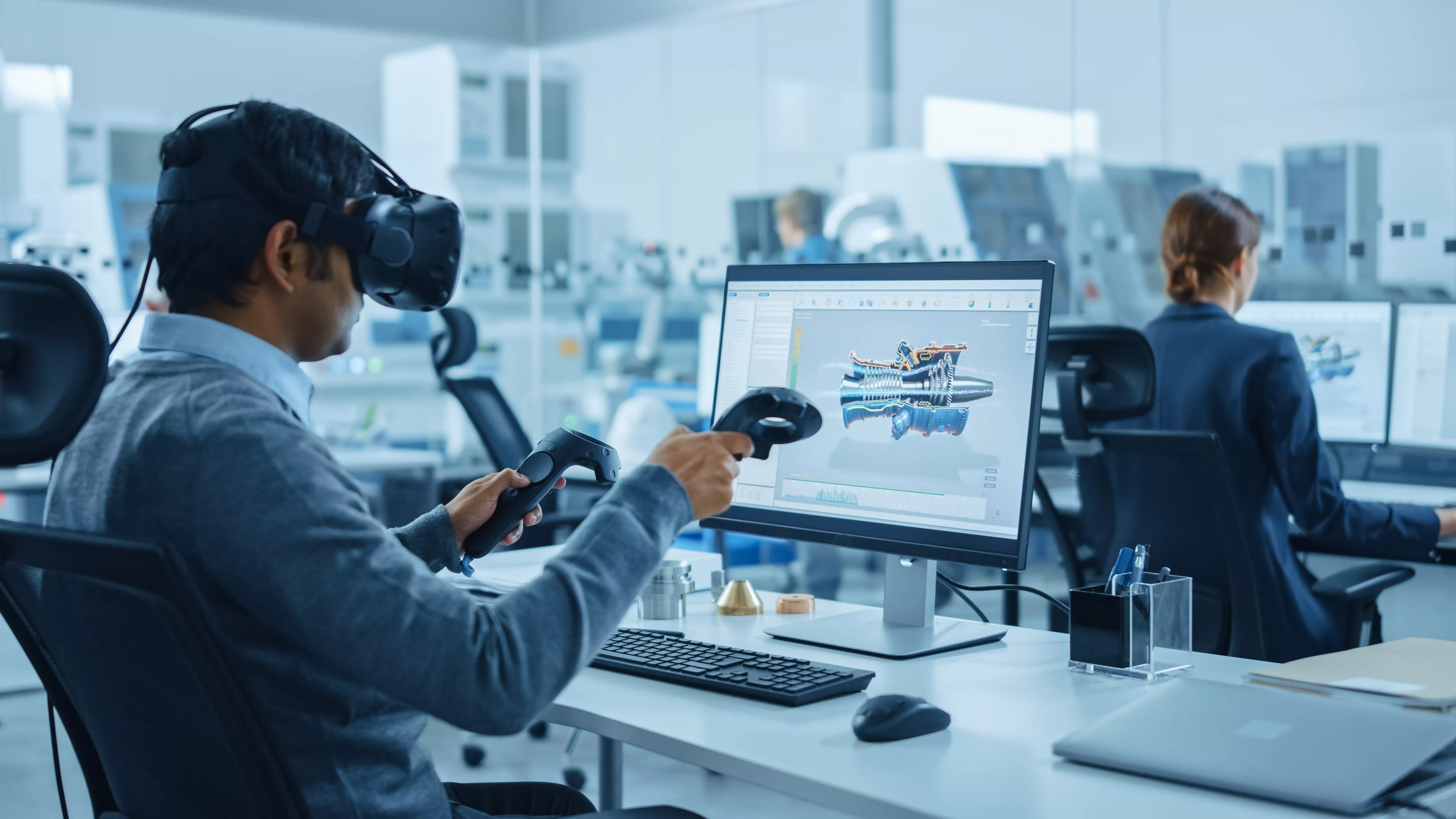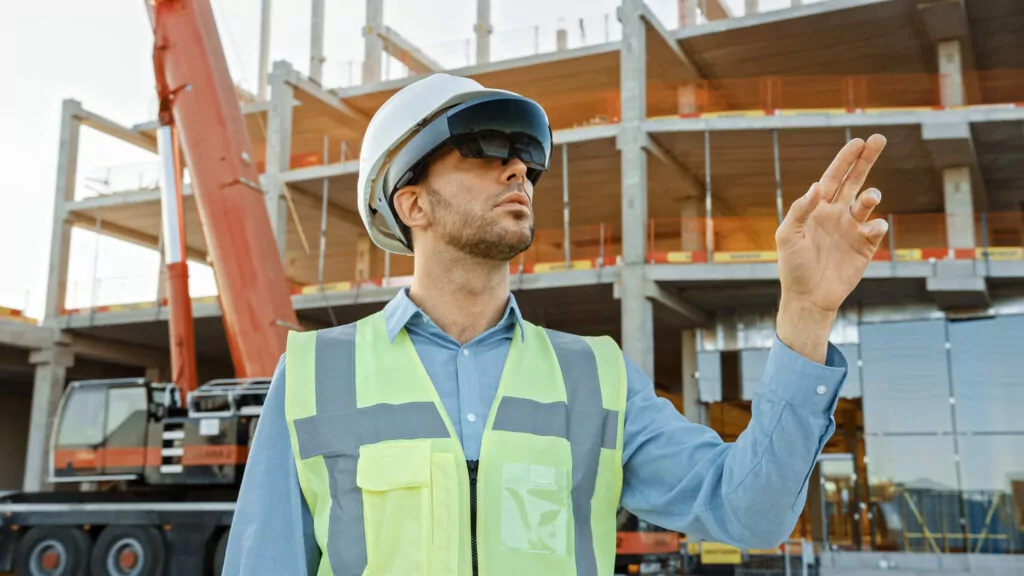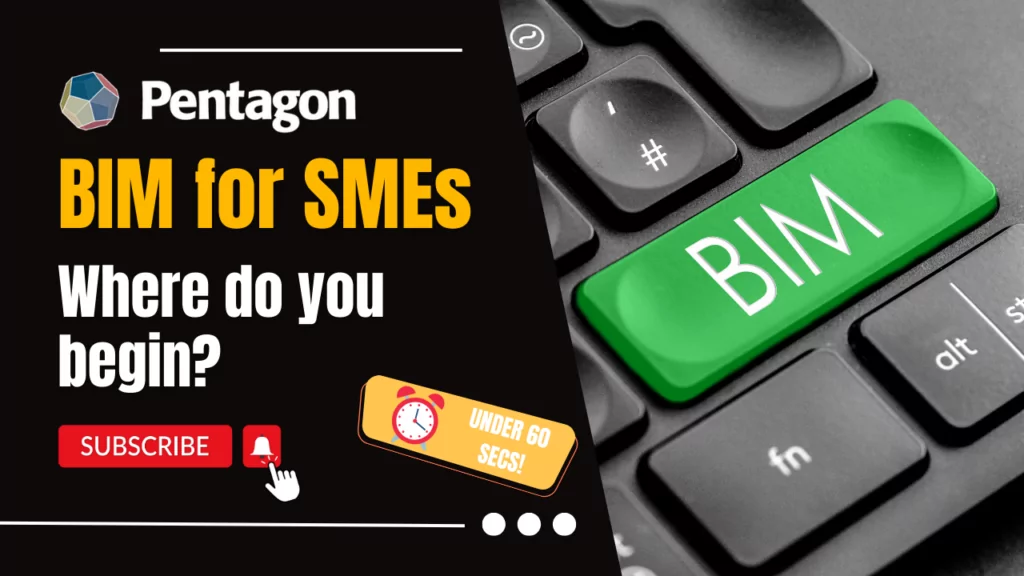Creating immersive and realistic virtual environments for clients to explore!
BIM is a powerful tool, and when combined with Artificial Intelligence (AI), Augmented Reality (AR), and Virtual Reality (VR), it opens a whole new dimension of possibilities. In this blog, we’ll explore how AI, AR, and VR are reshaping the way clients interact with construction projects.
Ensuring that resources such as time and money aren’t wasted on a project is always important no matter the size and scale of the project. Through AR and VR, clients can have the ability to virtually explore and interact with a proposed building, enabling them to gain a better understanding of the spatial layout, finishes, and overall aesthetics. This enables early feedback and facilitates effective communication between clients, architects, and other stakeholders.
With data being a key element in AI, Pentagon ensures effective data management for opportunities in Design & Construction verification, Digital Twins, Asset Performance Management, and prepares for future AI advancements.
Utilising high-fidelity data for any project is key when assessing previous, current, and future projects. Pentagon has been able to analyse and optimise this data for clients and contractors to highlight key pitfalls from these projects, allowing for adjustments to be made at the planning, construction, and installation phases.
Virtual Reality
VR is a simulated 3D environment that enables users to explore and interact with virtual surroundings in a way that approximates reality, as it is perceived through the users’ senses.
There are three main types of VR:
- Non-immersive – Refers to a 3D simulated environment that’s accessed through a computer screen.
- Semi-immersive – Offers a partial virtual experience for users that’s accessed through a computer screen, glasses, or headset.
- Fully immersive – Delivers the greatest level of virtual reality, with the user completely immersed in the 3D simulated world. Sight, sound, and sometimes even touch is incorporated.

AI enhances 3D models, creating immersive and realistic virtual environments for clients to explore. Can you imagine being able to step into your construction project before a single brick is laid? AI algorithms take 3D models to the next level, adding textures, lighting, and environmental factors for an incredibly lifelike experience. These realistic visualisations not only captivate clients but also provide a deeper understanding of the project.
Thanks to the power of VR, AI-driven design suggestions and modifications can come to life in real time. As clients express their preferences, AI algorithms dynamically adjust the design in a virtual space. It’s like having a virtual design studio at your fingertips! Clients can actively participate in the design process, providing immediate feedback. It’s a collaborative and dynamic approach that transforms how we traditionally think about design.
AI analyses BIM data for design optimisations, with VR helping visualise these enhancements. AI algorithms crunch the numbers, suggesting optimisations that enhance cost efficiency, energy performance, and more. VR provides a visual playground where clients can see these optimisations in action. It’s not just about making design changes; it’s about making informed decisions.
Real-time insights into project status, cost projections, and timelines can be provided by AI. In VR, clients can virtually walk through the project, gaining a comprehensive understanding of every detail. This immersive experience elevates project reviews, ensuring clients are well-informed.
AI adapts the VR experience based on client feedback, providing a truly customised exploration which can be tailed to the specific needs and preferences of clients to create the ultimate customised virtual walkthrough. This level of engagement enhances communication and ensures the client’s vision aligns seamlessly with the project.
Historical project data can be analysed by AI, resulting in the prediction of project outcomes and risks. In VR, clients can explore different scenarios, making informed decisions to optimise project success. The purpose of this is to foresee challenges and mitigate risks before they become issues.
Clients can gain a deeper understanding of projects through VR-based training modules that use AI to simulate construction processes. They can virtually immerse themselves in the construction workflow, gaining insights into the intricacies of the project. It’s a revolutionary way to enhance client knowledge and involvement, with VR ensuring that it becomes a training ground for better project understanding.
As Digital Construction is at the forefront of the industry, it is a natural progression to collaborate, coordinate and clarify aspects of the digital construction process with the aid of VR. Pentagon has helped integrate this process into organisation’s workflows which allow for remote or offsite engineers to access to the facility through virtual walkthroughs. This has become extremely useful for project tracking, co-ordination, and asset information management.
Augmented Reality
AR is an enhanced, interactive version of a real-world environment achieved through digital visual elements, sounds, and other sensory stimuli via holographic technology. It incorporates three key features:
- A combination of digital and physical worlds.
- Interactions made in real-time.
- Accurate 3D identification of virtual and real objects.

Applications of AR and AI in AEC
- Design Optimisation: Architects and engineers can simulate and evaluate various design scenarios by leveraging AI algorithms and AR. Better decision-making is facilitated due to AI analysing data and generating design options, alongside AR’s ability to enable stakeholders to visualise and interact with designs in real-world contexts.
- Construction Automation: Combining AR with AI-powered robotics and automation has and will continue to revolutionise the construction industry. Tasks such as material handling, site inspections, and assembly can be assisted by robots that are equipped with AI algorithms. Digital information from physical spaces can be overlayed through AR which guides construction workers/bots and ensures a high level of accuracy in complex tasks.
- Intelligent Project Collaboration: Collaboration and communication can be greatly improved among project stakeholders with AI-driven data analytics and AR. Project data can be analysed, patterns can be identified, and valuable insights can be generated for better decision making with the help of AI algorithms. With AR, teams can work together more effectively regardless of geographical locations.
AR applications overlay BIM data onto physical models, allowing clients to interact with personalised design elements. It’s a hands-on experience that bridges the digital and physical worlds. Clients can see and feel the design elements, making the experience more intuitive and personalised.
With AI-Assisted Project Documentation, AI automates project documentation from BIM data, and how AR provides real-time updates on construction sites. AI streamlines the documentation process, ensuring accurate and up-to-date information. AR overlays this information onto physical construction sites, offering clients real-time insights. It’s like having a digital blueprint come to life on the construction site!
Pentagon has implemented AR technology into organisations which has allowed for 3D projects to be viewable though different devices such as tablets. Projecting a predicted model into the construction project makes it inherently clear of what the next phase of the project needs to be in regard to the installation and co-ordination for the project.
In this blog, we’ve witnessed the transformative impact of AI, AR, and VR on client BIM experiences in construction and encourage you to explore the potential of implementing AI, AR, and VR into your projects. The possibilities are vast, and as technology continues to evolve, we can only imagine the future advancements that will further revolutionize the construction industry.
Interested in integrating VR or AR to your organisation?
Integrating VR and AR into your organisation is always a bespoke process, fill out the form below to request a free consultation with our Digital Construction Integration team to see how Pentagon can help:
Contact Us
"*" indicates required fields


